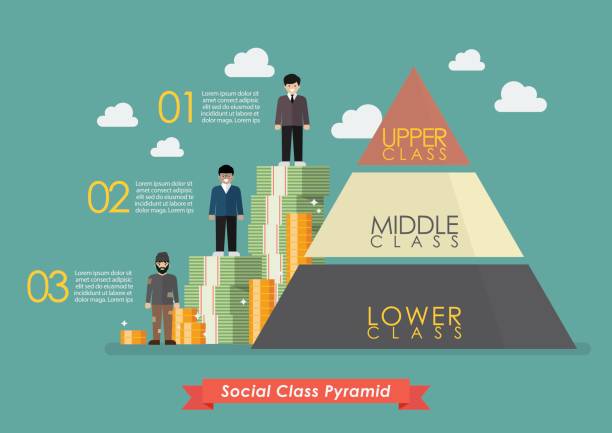The genome is an instructional manual; epigenetics are master switches
That is a simplified way of describing the relationship between the genome and epigenetics.
The genome is the complete set of genetic instructions for an organism encoded in DNA. Epigenetics refers to changes in the function of these genes that are not due to changes in the underlying DNA sequence. These changes can include the modification of DNA, as well as changes in the way that DNA is packaged with proteins, which can affect whether or not a gene is turned on or off. These modifications can act like “master switches,” controlling gene expression and influencing an organism’s development, physiology, and other traits.

![]()
Genomics tells us predispositions are more likely to transpire and translate by regulating the epigenome. Genomics and epigenomics are essential in determining an organism’s traits and characteristics. Genomics provides information about an individual’s genetic makeup, including variations in the DNA sequence that may influence the risk of certain diseases or traits. Epigenetics, on the other hand, refers to the molecular mechanisms that control the expression of genes, such as the modification of DNA and the way DNA is packaged with proteins.
Research suggests that the epigenome can play a crucial role in regulating the expression of genes associated with diseases and other traits and can help to explain why some individuals with a genetic predisposition to a particular condition may not develop it while others do. Epigenetic modifications can also be influenced by environmental factors such as diet, stress, and exposure to toxins, which may further affect the development of certain diseases or traits. In summary, genomics provides information about predispositions, and epigenetics regulates the translation of that predisposition into phenotype.

![]()
Egoism, egotism, and tribalism have been our default programs since the stone Age, so economic systems are stimulating these negative traits and suppressing positive attributes like empathy, sympathy, compassion, and altruism; how can we escape the invisible trap?
Egoism, egotism, and tribalism have been present in human societies throughout history and have been shaped by various cultural, social, and economic factors. Economic systems, as you suggest, can also play a role in reinforcing these negative traits and suppressing positive attributes such as empathy, sympathy, compassion, and altruism.
One approach to addressing this issue is through education and awareness-raising efforts that promote an understanding of the underlying causes and consequences of these behaviors. Encouraging people to think critically about the social and economic systems that shape their lives and how these systems can reinforce negative traits can help to promote a more equitable and just society.
Another approach is to actively work to create economic systems and policies that promote positive behaviors and discourage negative ones. For example, policies that promote income equality and social inclusion can help to reduce the incentives for egoism and egotism. Additionally, policies that support the development of community-based organizations and institutions can help to foster a sense of connectedness and shared responsibility, which can help to promote altruism and cooperation.
It’s also essential to address the root causes of these issues, such as poverty, inequality, and discrimination. Addressing these social issues can help to create more equitable and inclusive societies that are better equipped to promote positive behaviors and discourage negative ones.
Ultimately, escaping the “invisible trap” of negative behaviors requires a multifaceted approach that addresses the underlying social, economic, and cultural factors that contribute to these behaviors. It’s a long-term and complex process, but by raising awareness, creating policies and programs that promote positive behaviors, and addressing the root causes of these issues, we can work towards creating a more equitable and just society for all.

![]()
Toxins and pollutants are ubiquitous; stress is chronic and unavoidable; food and medicine are already messing up human health; ignoring Nature’s big plan that is a holistic approach; ignorance and sensibility, the dynamism of greed and fear are disrupting homeostasis, where the exit is?
The issues you raise, such as the ubiquity of toxins and pollutants, chronic stress, and the negative impacts of modern food and medicine on human health, are complex and multifaceted. They result from individual and societal factors, and addressing them will require a holistic approach that considers the interconnectedness of these issues.
One approach is to focus on prevention through policies and practices that reduce exposure to toxins and pollutants, promote healthy eating and living, and support access to nature and healthy environments. This can include regulations on industry to reduce pollution, promoting sustainable farming and food production, and investing in green spaces and nature-based solutions.
Another approach is to focus on treatment and mitigation by providing access to healthcare and support services that address the physical and mental health impacts of these issues. It can include providing access to medical care and mental health services, as well as supporting research into the impacts of toxins and pollutants on human health, and developing new treatments and therapies to address these impacts.
It’s also essential to address the underlying societal and economic factors that contribute to these issues, such as poverty, inequality, and discrimination. Addressing these social issues can help to create more equitable and inclusive societies that are better equipped to promote health and well-being for all.
Ultimately, addressing these issues will require a multifaceted approach that engages individuals, communities, and society as a whole. It’s important to recognize that the issues you raise are interconnected and addressing one aspect of the problem will require looking at the bigger picture and understanding the underlying causes. It’s a long-term and complex process, but by raising awareness, creating policies and programs that promote health and well-being, and addressing the root causes of these issues, we can work towards creating a more equitable and just society for all.

![]()
What measures must we take at the government and individual levels to find some way out of the pitfall and save humanity from pain and suffering?
Addressing the issues that you’ve raised and finding a way out of the pitfall will require a multifaceted approach that engages individuals, communities, and society as a whole. Both government and individual level actions are important to address these issues and save humanity from pain and suffering.
At the government level, some measures that can be taken include:
- Investing in research to better understand the impacts of toxins and pollutants on human health and the environment, and developing new treatments and therapies to address these impacts.
- Implementing regulations and laws to reduce exposure to toxins and pollutants, and promoting sustainable farming and food production.
- Investing in green spaces and nature-based solutions to promote healthy environments and access to nature.
- Providing access to healthcare and support services that address the physical and mental health impacts of these issues.
- Addressing underlying societal and economic factors such as poverty, inequality, and discrimination that contribute to these issues and create more equitable and inclusive societies that are better equipped to promote health and well-being for all.
At the individual level, some measures that can be taken include: - Educating oneself about the impacts of toxins and pollutants on human health and the environment, and taking steps to reduce exposure to these toxins.
- Adopting healthy eating and living habits, such as eating a balanced diet, getting regular exercise, and managing stress.
- Seeking out nature and spending time in green spaces as much as possible.
- Taking advantage of healthcare and support services that are available to address the physical and mental health impacts of these issues.
- Participating in community-based organizations and advocacy groups that work to address these issues and promote health and well-being.
It’s important to recognize that the issues you raise are interconnected and addressing one aspect of the problem will require looking at the bigger picture and understanding the underlying causes. It’s also important to keep in mind that these measures are not mutually exclusive and they can work together to create a more equitable and just society for all.

![]()
Some countries and societies are already on the way to improving the social and economic conditions And public health and welfare; why are the other countries not using the Bildung tradition to achieve a prosperous and happy society?
The Bildung tradition, which emphasizes the development of the individual through education, self-cultivation, and engagement in society, has been an important part of some countries and societies throughout history. However, not all countries have embraced this tradition to the same degree, and there are a number of factors that can influence a country’s ability to achieve a prosperous and happy society through this approach.
One factor is the level of economic development and resources available to a country. Countries with higher levels of economic development and resources may have more capacity to invest in education, healthcare, and social welfare programs that promote the well-being of their citizens.
Another factor is the political and social culture of a country. Some countries may have political systems that are more conducive to implementing policies and programs that promote the well-being of their citizens, while others may have more restrictive systems that make it difficult to implement these types of policies and programs. Additionally, some societies may place a greater emphasis on individualism, while others may place a greater emphasis on collectivism, which can influence the way in which resources are allocated and distributed.
Finally, some countries may have a strong tradition of civic engagement and social responsibility, which can help to create a sense of shared responsibility for the well-being of all citizens. This can lead to a strong sense of community and social cohesion, which can be beneficial for the overall well-being of society.
It’s important to note that societies and cultures are diverse and dynamic, and the reasons why some countries or societies are better than others in achieving a prosperous and happy society are multiple, complex and can’t be reduced to a single cause. Additionally, not all societies are at the same stage of development and the Bildung tradition may be more relevant for some than others.

![]()
What is the take-home from this discussion?
The take-home message from this discussion is that addressing the issues raised such as the ubiquity of toxins and pollutants, chronic stress, and the negative impacts of modern food and medicine on human health, is complex and multifaceted. It requires a holistic approach that takes into account the interconnectedness of these issues. To find a way out of the pitfall and save humanity from pain and suffering, it will require a multifaceted approach that engages individuals, communities, and society as a whole. Both government and individual level actions are important to address these issues.
On the government level, measures such as investing in research, implementing regulations and laws, investing in green spaces, providing access to healthcare and support services, addressing underlying societal and economic factors such as poverty, inequality, and discrimination can help in creating more equitable and inclusive societies that are better equipped to promote health and well-being for all.
On the individual level, measures such as educating oneself, adopting healthy eating and living habits, seeking out nature, taking advantage of healthcare and support services, participating in community-based organizations and advocacy groups can also contribute to a more prosperous and happy society.
It’s important to recognize that the issues raised are interconnected and addressing one aspect of the problem will require looking at the bigger picture and understanding the underlying causes. Additionally, countries and societies are diverse and dynamic, and the reasons why some countries or societies are better than others in achieving a prosperous and happy society are multiple, complex and can’t be reduced to a single cause.

![]()
What are the bigger picture and underlying causes other than what we already have discussed?
The bigger picture and underlying causes that we discussed so far include:
- Environmental factors such as toxins and pollutants, lack of access to nature, and poor quality of air and water.
- Socioeconomic factors such as poverty, inequality, and discrimination.
- Societal and cultural factors such as political and social culture, and civic engagement and social responsibility.
- Economic development and resources available to a country.
Other factors that contribute to the bigger picture and underlying causes include: - Historical and societal trauma, which can lead to intergenerational health disparities and persistent social and economic inequalities
- Systemic racism and discrimination, which can lead to disparities in access to education, healthcare, and other opportunities
- Lack of access to education and job training, which can lead to economic insecurity and limited opportunities for upward mobility
- Short-sighted economic policies that prioritize short-term growth and profit over long-term sustainability and well-being
- Inadequate healthcare and mental health services, which can lead to poor physical and mental health outcomes.
It’s important to note that these factors are interconnected and often mutually reinforcing, and addressing one aspect of the problem will require understanding the complex interplay of these factors.
Addressing these underlying causes will require long-term and systemic changes across multiple sectors, including government, business, civil society and individuals. It will also require collaboration and cooperation across different levels of society, including international, national and local levels.

![]()
What is the best socio-system that has been proven successful and sustainable development of the time?
It is difficult to say which socio-economic system is the “best” as different systems may be more effective in different contexts and for different goals. However, some socio-economic systems have been successful in promoting sustainable development and well-being for their citizens.
One example is the Nordic model, which is characterized by a strong welfare state, high taxes, and a comprehensive system of social services. This model has been successful in promoting a high standard of living and a relatively equal distribution of wealth and opportunities. The Nordic countries consistently rank among the highest in measures of human development, such as the Human Development Index, and have low poverty rates, high life expectancy, and low levels of income inequality.
Another example is the cooperative model, which is characterized by worker-owned and controlled enterprises, and community-based ownership and decision-making. This model has been successful in promoting economic democracy, worker empowerment, and community development, and has been implemented in various forms in many countries, including Spain, Italy, and the United States.
Another approach is the sustainable development approach which aims to balance economic growth, social progress, and environmental protection. This approach has been adopted by many countries as a framework for their development policies.
It’s important to note that these models are not perfect, and each one has its own challenges. Additionally, the success of a socio-economic system is highly dependent on its implementation and the specific context in which it is applied. Therefore, when considering the implementation of a particular socio-economic system, it’s important to consider the unique cultural, political, economic, and social context of the country or region in question.

![]()
Even Nature’s unchangeable law is change and evolution. How come humans with limitations in perception and cognition can design a perfect system, l am not talking about perfection but the betterment of the system.
It is true that nature’s laws are characterized by change and evolution, and that humans, with our limitations in perception and cognition, may not be able to design a perfect system. However, this does not mean that we cannot strive to improve the socio-economic systems that we have in place.
One of the key challenges in designing and implementing socio-economic systems is that they are complex and dynamic, and there is no one-size-fits-all solution. The best system for a particular context will depend on a variety of factors, including the cultural, political, economic, and social context of the country or region in question.
Additionally, it’s important to recognize that socio-economic systems are not static, they are constantly evolving and changing in response to new challenges and opportunities. Therefore, it’s important to continuously monitor and evaluate the effectiveness of these systems and make adjustments as necessary.
A key principle of sustainable development is continuous improvement, which means that the system should be designed to be adaptive and responsive to changing conditions. This approach emphasizes the need to learn from experience, to be open to new ideas, and to be willing to adapt and change in response to new information and changing circumstances.
In summary, it’s not possible to design a perfect system that would work in all contexts and for all time, however, we can strive to improve the systems we have in place and adapt them to the changing circumstances. By continuously monitoring, evaluating, and making adjustments as necessary, we can work towards creating socio-economic systems that promote sustainable development and well-being for all.
